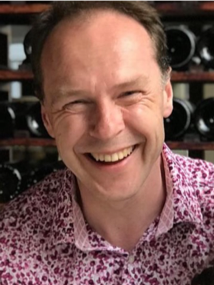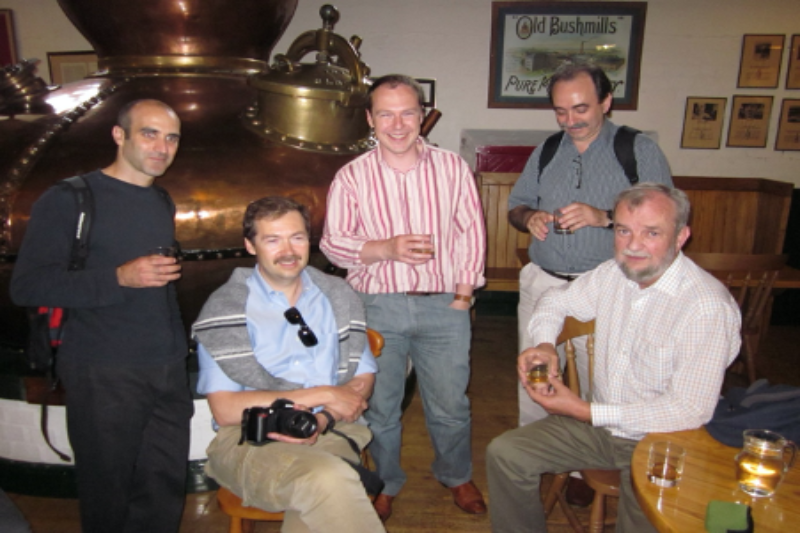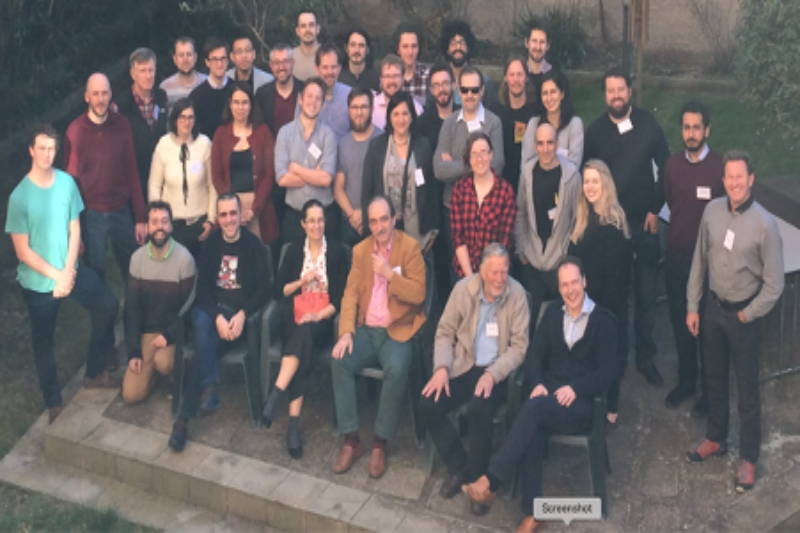Domain and Domain Walls
Professor Marty Gregg - MRIA
Domains and Domain Walls
 Within the field of materials physics, one of our key themes involves exploring, understanding and manipulating nanoscale features in functional oxides, with a particular focus on ferroelectrics. In general, we create interesting topological structures and then seek to explore their exotic electrical, magnetoelectrical and thermal properties. Currently, much of the research specifically concerns domain walls; these topological objects not only display unique and rich functional behaviour, but they are also mobile. This allows their functionality to be spatially and dynamically reconfigured, prompting us to dream of entire domain wall circuits that can be made and then erased many times each second, thereby generating functionality that changes in both space and time.
Within the field of materials physics, one of our key themes involves exploring, understanding and manipulating nanoscale features in functional oxides, with a particular focus on ferroelectrics. In general, we create interesting topological structures and then seek to explore their exotic electrical, magnetoelectrical and thermal properties. Currently, much of the research specifically concerns domain walls; these topological objects not only display unique and rich functional behaviour, but they are also mobile. This allows their functionality to be spatially and dynamically reconfigured, prompting us to dream of entire domain wall circuits that can be made and then erased many times each second, thereby generating functionality that changes in both space and time.
As might be expected, high-end patterning and imaging facilities are a must and we make extensive use of ion, electron and scanning probe microscopy, available both in-house and beyond (through collaborations and access to national and international central facilities).
The overall activity is led by Prof Marty Gregg, but a number of academics are involved, each with their own interests and expertise: Dr Miryam Arredondo (electron microscopy), Dr Amit Kumar (scanning probe microscopy) and Dr Ray McQuaid (electrical and thermal transport). In addition, there are usually around five post-doctoral researchers and ten or more PhD students, mainly performing new and often extremely challenging experiments.
The ambition and novelty of the research means that we often publish in high-visibility journals. For example, in 2019/2020, our work and thoughts on domain and domain walls have appeared in (among others): Nature Materials, Nature Reviews Physics, Advanced Materials, Advanced Functional Materials and Nano Letters.
Global academic interest is perhaps best-illustrated by the number of invited talks we give at international conferences (up to ten per annum). Marty Gregg’s contribution to the field was recognised recently in his election to the Royal Irish Academy (2018).
We currently lead a £2.2M EPSRC “Critical Mass Grant” on Domain Walls, allowing us to work closely with colleagues in Warwick (Marin Alexe), Cambridge (Ekhard Salje and Michael Carpenter) and St Andrews (Jim Scott [recently deceased] and Finlay Morrison). In addition, we are generously funded through the US-Ireland R&D Partnership Programme, working with Alexei Gruverman (Nebraska-Lincoln) and Uschi Bangert (Limerick), Nazanin Bassiri Gharb (Georgia Tech.) and Brian Rodriguez (UCD) and Ramamoorthy Ramesh (UCLA) and Mike Coey (TCD). Most recently, we have been invited to take part in a €4.3M EU Horizon2020 ITN called “MANIC” (working with Beatriz Noheda, Igor Luk’yanchuk, Igor Stolichnov and Pavlo Zubko amongst others).
To do the research described above, we need access to cutting-edge microscopy capability and some of our funding is entirely devoted to keeping our in-house facilities up to date. For example, the EPSRC has recently supported us through a £1.8M investment in new focused ion beam (FIB) and transmission electron (TEM) microscopes (commissioned in 2018) and sophisticated holders for temperature variable and controlled atmosphere experiments in the TEM (commissioned in 2020). Scanning probe instruments have also recently been upgraded through university funds (£250k was allocated to purchase a new multimode atomic force microscope which was commissioned in 2017/18).
Luckily, the international ferroelectrics and multiferroics community is extremely open to interaction and collaboration and we make the most of this. Recent collaborations, as cemented through formal grant funding, are outlined above. However, this is really only the tip of the iceberg. We work together with a large number of teams, in what is fondly referred to, in ferroelectrics research, as the “Global Lab”.
It is, nevertheless, appropriate to give special mention to the following:
- Prof JF Scott FRS (Jim) has been Marty Gregg’s primary collaborator and mentor for almost 20 years, initially from his lab in Cambridge and, in later years, from St Andrews. As a result of our collaboration, we have held five joint EPSRC programmes, with a total value of ~£4.5M and published around 50 journal papers together. When Jim recently succumbed to increasing ill-health, it marked the end of an era for the entire community, but it was particularly keenly felt in Belfast.
- Prof Alexei Gruverman has been a major influence, helping initiate piezoresponse force microscopy (PFM) as a mainstream characterisation technique in Belfast. We have held two joint research programmes (worth a total of ~£1.5M funded by NSF-EPSRC and US-Ireland R&D schemes) and have published around a dozen papers together, often in journals with exacting editorial standards (3 in Advanced Materials, 2 in Nano Letters, 2 in Advanced Functional Materials and 1 in Nature Communications).
- The “Ferroelectrics Fight-Club” is a group of like-minded academics who meet regularly to share recent unpublished insights and debate them in a robust and completely open manner. Members include (among others): Gustau Catalan and Neus Domingo (ICN2 Barcelona), Finlay Morrison (St. Andrews), Dennis Meier (NTNU Trondheim), Patrycja Paruch (Geneva), Jorge Iniguez (Luxembourg Institute of Science and Technology), Pavlo Zubko (UCL), Matt Dawber (Stonybrook), Igor Luk’yanchuk (University of Picardie), Lukas Eng (TU Dresden), Marin Alexe (Warwick), Beatriz Noheda (Groningen), Ekhard Salje (Cambridge), Alexei Gruverman (UNL) and Jim Scott (St Andrews).

High-Level Ferroelectric Discussions in Bushmills (2010). From left to right: Gustau Catalan, Alexei Gruverman (seated), Marty Gregg, Marin Alexe and Jim Scott (seated)

The Ferroelectrics Fight Club Meets in Venice (2019). We’re still talking and working with each other and the group is expanding.
